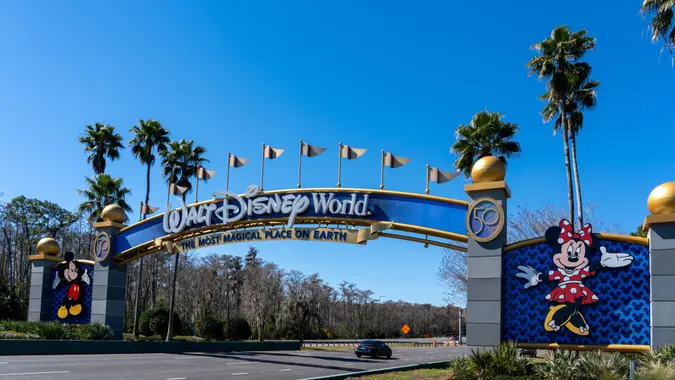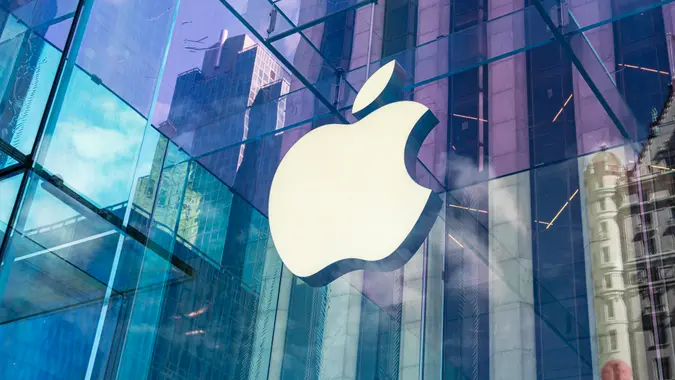How Much Money Would You Have If You Invested $1K in Microsoft Stock in 2000?

Commitment to Our Readers
GOBankingRates' editorial team is committed to bringing you unbiased reviews and information. We use data-driven methodologies to evaluate financial products and services - our reviews and ratings are not influenced by advertisers. You can read more about our editorial guidelines and our products and services review methodology.

20 Years
Helping You Live Richer

Reviewed
by Experts

Trusted by
Millions of Readers
If you own a computer, you know of Microsoft Windows. In fact, it’s still the most widely used operating system and cloud service in the world, with 7 out of 10 computers using it. As a result, Microsoft is one of the most valuable companies in the world.
Since it went public on March 13, 1986, its stock has grown exponentially. What if you could go back in time and invest $1,000 when it went public? If you were lucky enough to do so, your original grand could be worth about $8 million today.
Never mind buying Microsoft way back then, though, what if you invested $1,000 in Microsoft stock just 25 years ago? Let’s find out how much would it be worth today.
Quick Take: Investing in Microsoft (MSFT) Now
Though investing in Microsoft won’t necessarily give you Bill Gates’ money, which is currently an estimated net worth of $107 billion, it could definitely boost your portfolio and financial outlook. Here is how the stock is performing as of Sept. 10, 2025:
- Stock price: $501.69
- Market cap: $3.72 trillion
- 52-week high: $555.45
- 52-week low: $344.79
- Dividend yield: 0.66%
Microsoft Stock in 2000-2025
Founded in 1975 by Bill Gates and Paul Allen, Microsoft Corporation was already a major tech company by the year 2000. At the time, it was riding the wave of the dot-com boom and had a market share of 97%.
Let’s assume you invested $1,000 at the beginning of 2000. The stock opened on January 3, 2000, at $58.69, according to Microsoft’s website. Therefore, your $1,000 would buy you 17 shares (adjusted for Microsoft’s nine stock splits).
As of Sept. 10, 2025, Microsoft’s stock price is about $502. If you multiply that by your 17 shares, they would now be worth $8,534, a return of close to 700%. This amount, however, does not include reinvested cash dividends. Cash dividends are payments a company makes to its shareholders from its profits.
Microsoft’s current quarterly dividend is $0.66 per share. You would receive $11.22 (17 shares x $0.66) per quarter. You can reinvest the money through a dividend reinvestment plan (DRIP) or receive it as cash. Reinvesting through a DRIP allows you to purchase additional shares at a discounted rate, compounding the value of your investment.
The Dot-Com Bubble and Microsoft’s Long-Term Stock Performance
Stock prices fluctuate, and even successful companies like Microsoft experience setbacks. Shortly after 2000, the dot-com bubble burst. Microsoft’s stock price dropped and remained stagnant for years. For example, the $1,000 invested at the beginning of 2000 was worth just $355 two and a half years later — a 65% loss. However, if you were patient, the stock not only regained what you lost but also increased significantly.
Investing in stocks is a long-term commitment. While there may be ups and downs, history shows that those who hold onto their investments long-term are more likely to see significant returns.
Comparing Microsoft Stock’s Performance to Other Investments
While a 700% return on a $1,000 investment in Microsoft stock over the past 25 years is impressive, how does it compare to S&P returns?
The average annual return of the S&P 500 since 2000 is approximately 7.92% per year, for a total return of 603.08%, assuming you reinvested your dividends. A $1,000 investment in an S&P 500 index fund would be worth roughly $7,030.83 in 2025. Ultimately, investors who stuck with Microsoft reaped the rewards, slightly edging out the index.
Caitlyn Moorhead contributed to the reporting for this article.
 Written by
Written by  Edited by
Edited by 


























